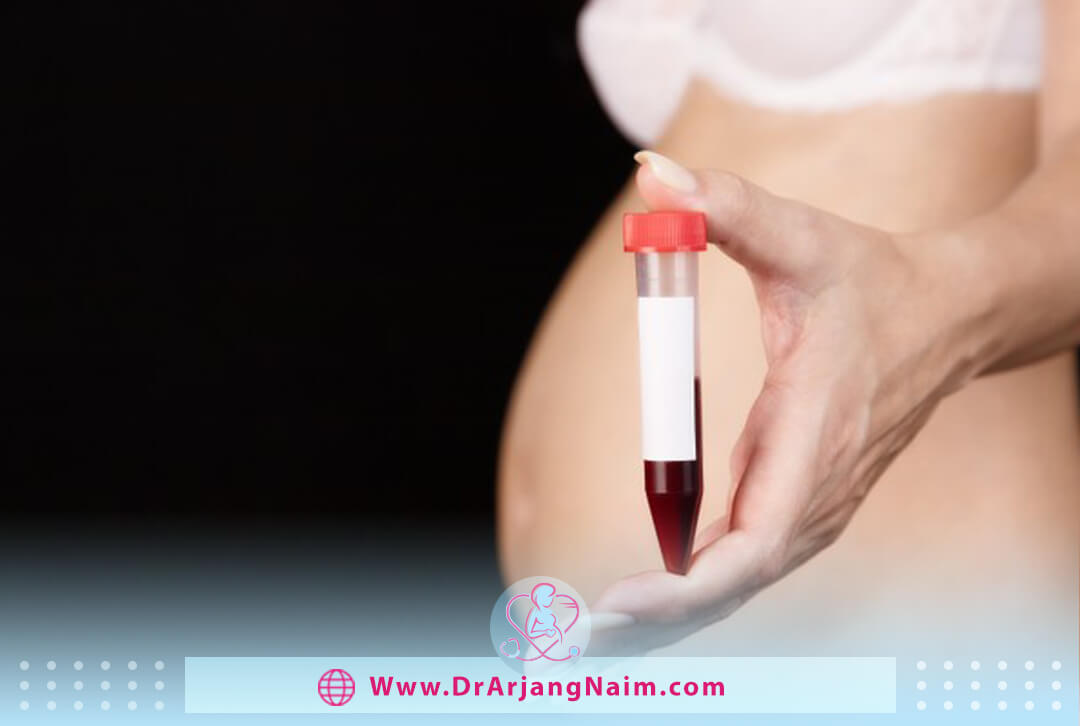Gestational diabetes is diabetes that is first diagnosed during pregnancy. Like other types of diabetes, gestational diabetes affects how the cell uses sugar (glucose). Gestational diabetes causes high blood sugar, which can affect pregnancy and the health of the baby. While any pregnancy complication is a concern, pregnant mothers can control their diabetes by eating healthy foods, exercising, and taking medication if necessary. Blood sugar control can maintain the health of the mother and baby and prevent difficult delivery.
There are two types of GD. Women with class A1 can control it through diet and exercise. People with class A2 need to take insulin or other medications. In women with gestational diabetes, blood sugar usually returns to normal soon after delivery. But if a mother has diabetes during pregnancy, she is more likely to develop diabetes in the future, so she should take the necessary precautions to prevent it.
Different types of diabetes
Types of diabetes include:
- Type 1 diabetes: Type 1 diabetes is an autoimmune disease. This means that the immune system mistakenly attacks and destroys the beta cells in the pancreas that produce insulin. The cause of the attacks is unknown. Genetic and environmental reasons may cause it.
- Type 2 diabetes: Type 2 diabetes starts with insulin resistance. This means that the body cannot use insulin effectively. This stimulates the pancreas to produce more insulin to the point where it can no longer produce enough insulin, resulting in reduced insulin production, which leads to high blood sugar.
The exact cause of type 2 diabetes is unknown. Genetics, lack of exercise, and weight gain can be factors that increase the risk of developing diabetes. - Gestational diabetes: This type of diabetes is diagnosed during pregnancy as high blood sugar. This is due to hormones secreted by the placenta that have anti-insulin effects and disappear after pregnancy.
Symptoms
Gestational diabetes rarely causes symptoms. In some cases, it may cause mild symptoms, including:
- Fatigue
- Blurred vision
- Excessive thirst
- Excessive need to urinate
- Snoring
Causes
The exact cause of gestational diabetes is unknown, but hormones may play a role. During pregnancy, the body produces higher amounts of certain hormones. These hormones affect the placenta and help stabilize the pregnancy. Over time, the levels of these hormones in the body increase. They may make the body resistant to insulin, a hormone that regulates blood sugar.
Insulin helps transport glucose from the blood into the cells used for energy. During pregnancy, the body naturally becomes slightly insulin resistant, so more glucose in the bloodstream is passed on to the baby. If insulin resistance becomes too severe, abnormal blood glucose levels may rise, leading to GD.
Risk factors

The following conditions can increase the risk factor for gestational diabetes:
- High blood pressure
- Over the age of 25
- Family history of diabetes
- Overweight before becoming pregnant
- Experiencing gestational diabetes in the past
- Had an unexplained miscarriage or stillbirth
- Gaining a larger-than-normal amount of weight during pregnancy
- Multiple babies
- Previously given birth to a baby weighing more than 9 pounds.
- Have polycystic ovary syndrome (PCOS), acanthosis nigricans, or other conditions that are associated with insulin resistance
- Lack of physical activity
- Women who are Black, Hispanic, American Indian, and Asian American
Complications
Uncontrolled gestational diabetes can lead to high blood sugar levels. High blood sugar can cause problems for both mother and baby.
Complications that may affect the baby
If the mother has gestational diabetes, the baby may be at higher risk for the following conditions:
- Excessive birth weight: Maternal hyperglycemia may cause the baby to grow too large. Large babies weighing 9 pounds or more are more likely to be born by cesarean section.
- Preterm birth: Hyperglycemia may increase the risk of preterm birth in women. Or even preterm labor may be recommended by an obstetrician because of the baby’s size.
- Serious breathing difficulties: Babies born prematurely may experience Respiratory Distress Syndrome, a condition that makes breathing difficult.
- Low blood sugar: Sometimes, the babies of mothers with gestational diabetes have low blood sugar shortly after birth. Severe periods of hypoglycemia may cause seizures in the child. Fast feeding and sometimes an intravenous glucose solution can bring the baby’s blood sugar levels back to normal.
- Obesity and type 2 diabetes later in life: Babies of mothers with gestational diabetes are at higher risk of obesity and type 2 diabetes.
- Stillbirth: Untreated high blood sugar levels during pregnancy can lead to the baby’s death either before or shortly after birth.
Complications that may affect the mother
Risks That increase in the mother include:
- High blood pressure and preeclampsia
- Having a surgical delivery (C-section)
- Future diabetes
Diagnosis

The American Diabetes Association (ADA) encourages physicians to screen pregnant women regularly for signs of gestational diabetes. If the mother has no history of diabetes or abnormal blood sugar levels at the beginning of pregnancy, the doctor will probably screen the mother for diabetes at 24 to 28 weeks of pregnancy.
Glucose challenge test
Some doctors may start with a glucose challenge test. No preparation is required for this test. The pregnant mother drinks a glucose solution. After an hour, she gives a blood test. The doctor may perform a three-hour oral glucose tolerance test if the blood sugar level is high.
However, some doctors do not perform the glucose challenge test and only perform a 2-hour test. This is considered one-step testing.
One-step test
The doctor first tests fasting blood sugar. The pregnant mother should then drink a solution containing 75 grams of carbohydrates, and after 1 to 2 hours, the blood sugar test should be repeated. If the mother has any of the following blood sugar values, she has GD.
- Fasting blood sugar level greater than or equal to 92 milligrams per deciliter (mg/dL)
- One-hour blood sugar level greater than or equal to 180 mg/dL
- Two-hour blood sugar level greater than or equal to 153 mg/Dl
Two-step test
Do not need to fast for a 2-hour test; the mother should drink a solution containing 50 g of sugar. After an hour, a blood sugar test is taken. A test is taken if the blood sugar level is greater than or equal to 130 mg / dL or 140 mg / dL.
The doctor starts with a fasting blood sugar test in the second test. The mother should drink a solution containing 100 grams of sugar. A blood sugar test is taken one, two, and three hours later. If the mother has any of the following blood sugar values, she has GD.
- Fasting blood sugar level greater than or equal to 95 mg/dL or 105 mg/dL
- One-hour blood sugar level greater than or equal to 180 mg/dL or 190 mg/dL
- Two-hour blood sugar level greater than or equal to 155 mg/dL or 165 mg/dL
- Three-hour blood sugar level greater than or equal to 140 mg/dL or 145 mg/dL
Prevention
There is no guarantee of preventing GD, but a healthy diet before pregnancy can reduce the risk. Things that can reduce the risk of developing diabetes include:
- Eat healthy foods
- Keep active
- Start pregnancy at a healthy weight
- Don’t gain more weight than recommended
Target blood sugar levels for women during pregnancy
The American Diabetes Association recommends these goals for pregnant women who are testing their blood sugar:
- Before a meal: 95 mg/dL or less
- An hour after a meal: 140 mg/dL or less
- Two hours after a meal: 120 mg/dL or less
How common is diabetes during pregnancy?
In the United States, about 1 to 2 percent of pregnant women have type 1 or type 2 diabetes, and about 6 to 9 percent of pregnant women develop gestational diabetes. GD has increased in recent years. Recent studies have shown that from 2000 to 2010, the percentage of pregnant women with gestational diabetes increased by 56%, and the percentage of women with type 1 or 2 diabetes before pregnancy increased by 37%.
Treatment

For women with gestational diabetes, their treatment plan depends on their blood sugar level throughout the day. In most cases, the doctor will recommend that blood sugar be tested before and after a meal and that the condition be monitored with a healthy diet and regular exercise.
Lifestyle changes
Eating and exercising are important parts of maintaining a healthy blood sugar level. Doctors do not recommend losing weight during pregnancy, But the doctor determines how much weight is normal during pregnancy based on the mother’s pre-pregnancy weight.
Healthy diet
According to the American Diabetes Association (ADA), the treatment of gestational diabetes always includes special healthy diets that a registered nutritionist often recommends. Generally, diets for gestational diabetes focus on high-fiber, low-fat, low-calorie foods. The recommendation of these diets is to increase the consumption of vegetables, fruits, and whole grains and reduce the consumption of refined carbohydrates.
According to a 2008 report in the journal Review in Obstetrics and Gynecology, a diet that can help most women with high blood sugar during pregnancy includes 33 to 40 percent calories from complex carbohydrates, 35 to 40 percent fat, and 20 percent from protein. Eating small, regular meals throughout the day can help keep your blood glucose levels steady.
Stay active
Regular physical activity plays a key role in every woman’s health program before, during, and after pregnancy. Exercise lowers blood sugar, and as an added bonus, regular exercise can help relieve some common pregnancy discomforts such as back pain, muscle cramps, bloating, constipation, and sleep problems. With the doctor’s approval, can consider 30 minutes of moderate exercise most days of the week.
These exercises can include walking, swimming, dancing, and low-impact aerobics. Potentially dangerous activities such as basketball, football, horseback riding, and skiing should be avoided. In the first trimester of pregnancy, should avoid doing exercises that lie on the back, which can put pressure on certain blood vessels and accidentally restrict the baby’s blood flow.
Close monitoring of the child
An essential part of the treatment plan is careful observation of the child. The doctor may check the baby’s development with repeated ultrasounds or other tests. The doctor may deliver the baby if the mother does not show signs of labor by the due date. Premature delivery may increase the risk of complications for both mother and baby.
How is GD managed after pregnancy?
Research has shown that women with gestational diabetes are 3 to 7 percent more likely to develop type 2 diabetes over 5 to 10 years, so it is important to maintain these healthy habits during and even after pregnancy. Here are some ways to stay healthy after the baby is born:
- Keep up with doctor visits: Be sure to see a doctor regularly to check fasting glucose and HbA1c levels.
- Talk to a nutritionist: See a Nutritionist for a proper diet to prevent and control blood sugar.
- Continue to eat as healthy as possible every day: Try to avoid refined sugars and carbohydrates that raise blood sugar and can help prevent type 2 diabetes. Remember, simple sugars and carbohydrates are everywhere, so read food labels. Instead, eat unprocessed foods such as vegetables, lean meats, dairy, and whole grains.
- Breastfeeding for as long as possible: Breastfeeding may reduce the risk of developing type 2 diabetes after gestational diabetes. Several possible explanations include that breastfeeding women have lower blood glucose levels.
- Fit in fitness: Although exercising is difficult when having a newborn baby, try to stay as active as possible and maintain an ideal weight.
The bottom line
For many women, blood sugar tests are normal at the beginning of pregnancy, but at the end of pregnancy, due to the limited capacity for insulin secretion and insulin deficiency, the blood sugar rises and lasts until delivery. This condition is called gestational diabetes.
Although the results of tests in these people return to normal immediately after delivery, a significant number of them will develop diabetes in the future. During pregnancy, diabetes should be closely monitored by an obstetrician to protect the mother and baby from complications.
Arjang Naim, MD, regularly checks the condition of pregnant mothers and prescribes the necessary tests. If a mother has diabetes, he offers the treatment required to control blood sugar.
Additional questions
- Is gestational diabetes high-risk pregnancy?
Women who develop diabetes during pregnancy may need high-risk pregnancy care due to complications during pregnancy and delivery. These women are at risk of preeclampsia.
2. What are the symptoms of stillbirth?
- Spotting or bleeding
- Stopping fetal movement and kicks
- No fetal heartbeat was heard with the stethoscope or Doppler
3. How long can a newborn have low blood sugar?
Blood glucose levels usually return to normal within 12 to 72 hours after birth, especially when the baby is regularly feeding. It is rare for term babies to still have problems with their blood glucose levels.
4. What foods have the highest fiber?
- Beans
- Broccoli
- Berries
- Avocados
- Popcorn
- Whole Grains
- Apples
- Dried Fruits
- Potatoes
- Nuts
5. What are the warning signs of gestational diabetes?
- Sugar in the urine
- Unusual thirst
- Frequent urination
- Fatigue
- Nausea
- Blurred vision
- Vaginal, bladder, and skin infections
References
https://www.mayoclinic.org/diseases-conditions/gestational-diabetes/symptoms-causes/syc-20355339
https://www.webmd.com/diabetes/gestational-diabetes
https://diabetes.org/diabetes/gestational-diabetes
https://my.clevelandclinic.org/health/diseases/9012-gestational-diabetes
https://www.healthline.com/health/gestational-diabetes




